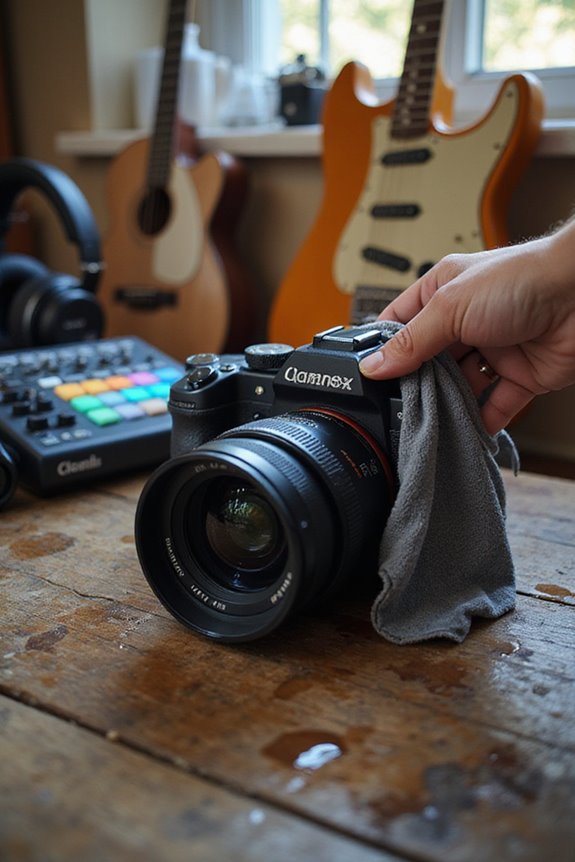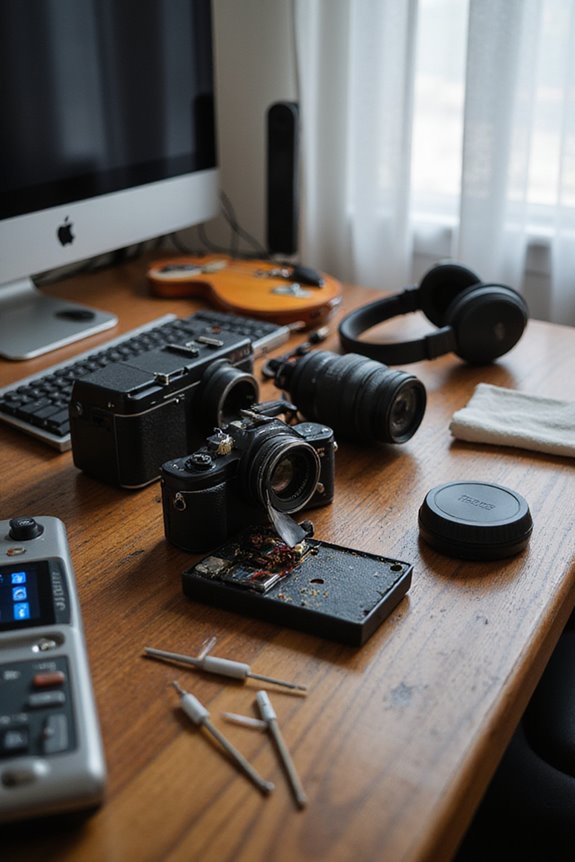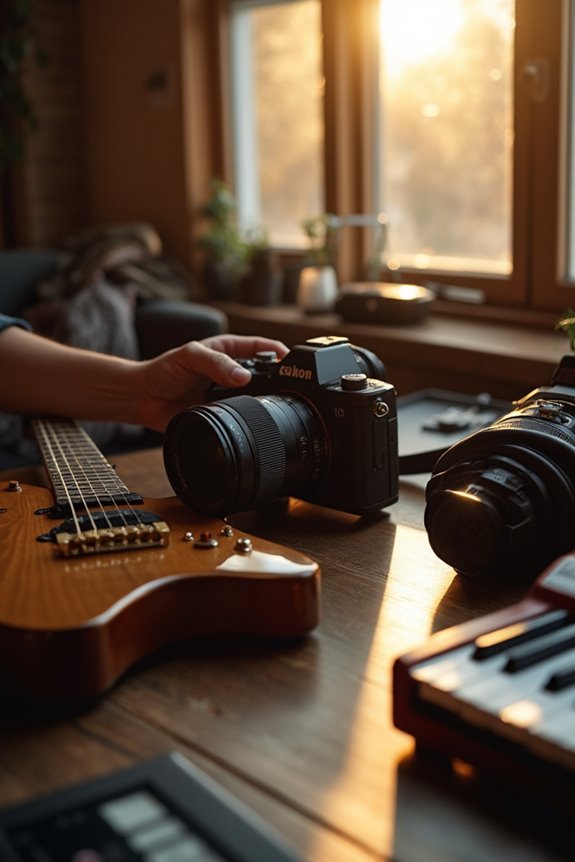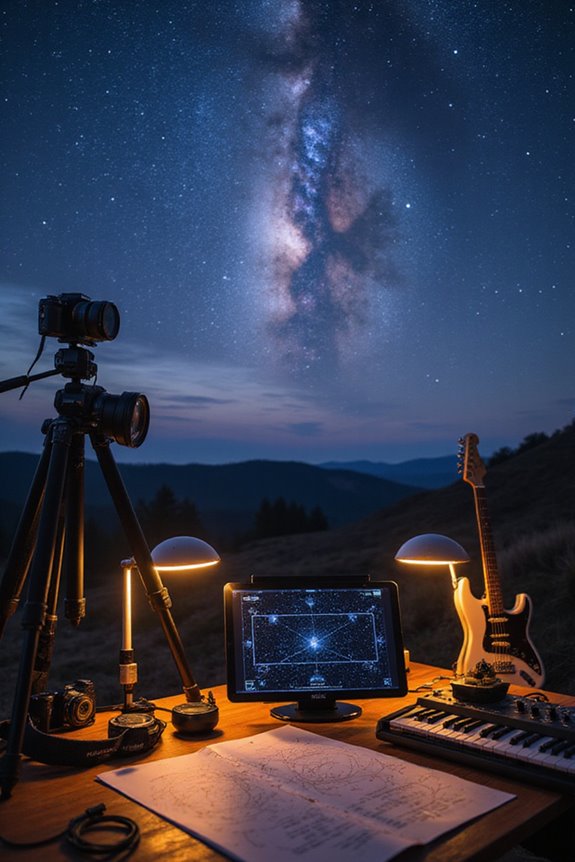When capturing snow and ice, we need to tweak our camera settings for the best results. First, use aperture priority mode and consider adjusting exposure compensation by +1 stop to guarantee bright white snow appears flawless. A low ISO helps maintain clarity. We should favor wider apertures for texture or smaller ones for overall sharpness. Finally, experimenting with techniques like backlighting can create stunning effects. Continue on to discover more tips and tricks for enchanting winter photos.
Key Takeaways
- Use aperture priority mode and adjust exposure compensation by +1 to +2 stops for accurately capturing snowy scenes.
- Keep your ISO low (100-400) to maintain image clarity in bright, reflective environments.
- Incorporate backlighting to enhance snow textures and create captivating sparkles.
- Utilize spot or incident metering to achieve precise exposure in bright conditions.
- Highlight foreground elements for depth while using wide-angle lenses to capture expansive snowy landscapes.
Camera Settings for Optimal Snow and Ice Photography
When we venture into snowy or icy landscapes, choosing the right camera settings is essential for capturing the beauty and detail of our surroundings. For starters, let’s use aperture priority mode. This allows us to control our aperture settings while the camera handles shutter speed and ISO adjustments. We recommend adjusting exposure compensation by +1 stop to keep those bright snow and ice colors from looking gray. Keeping our ISO low between 100 to 400 helps maintain image clarity. If we’re after detailed close-ups, wider apertures like f/4 isolate textures beautifully, while f/8 to f/16 provides sharpness across the scene. Experimenting with these settings will enhance our snowy captures, ensuring we don’t miss any details.
Lighting Techniques for Capturing Snowy Scenes
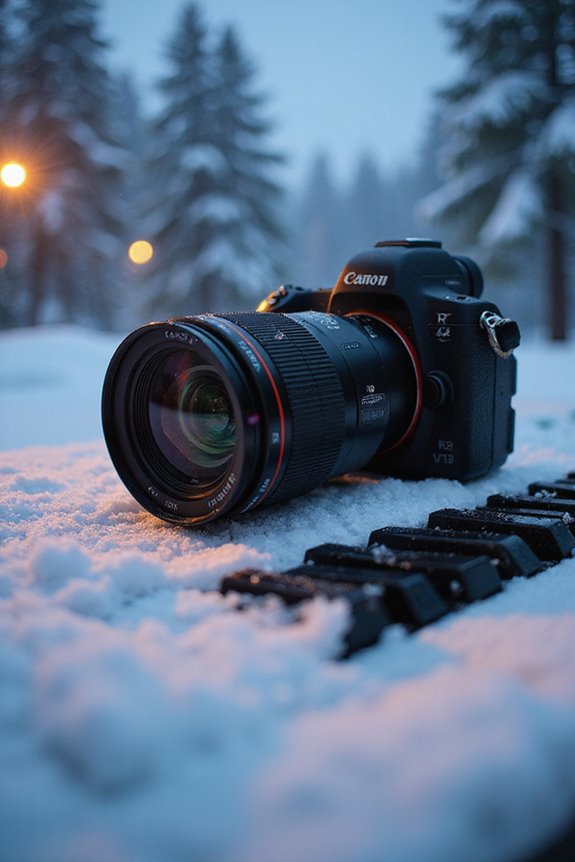
Capturing the stunning beauty of snowy landscapes isn’t just about achieving the right camera settings; it’s also about understanding how light interacts with the environment. To guarantee snow appears pure white and not dull gray, we often need to adjust exposure compensation by +1 to +2 stops.
Positioning ourselves to use lighting reflections, such as backlighting snow crystals, enhances textures and allows for magical sparkle. Avoid harsh midday light, as it flattens snow shadows and washes out details. Instead, opt for softer, diffused light during golden and blue hours to capture vibrant, contrasting scenes. Utilizing reflectors or fill flash can also help balance shadows, giving our images that professional edge while preserving snow’s enchanting appearance.
Focus and Composition Strategies in Winter Landscapes
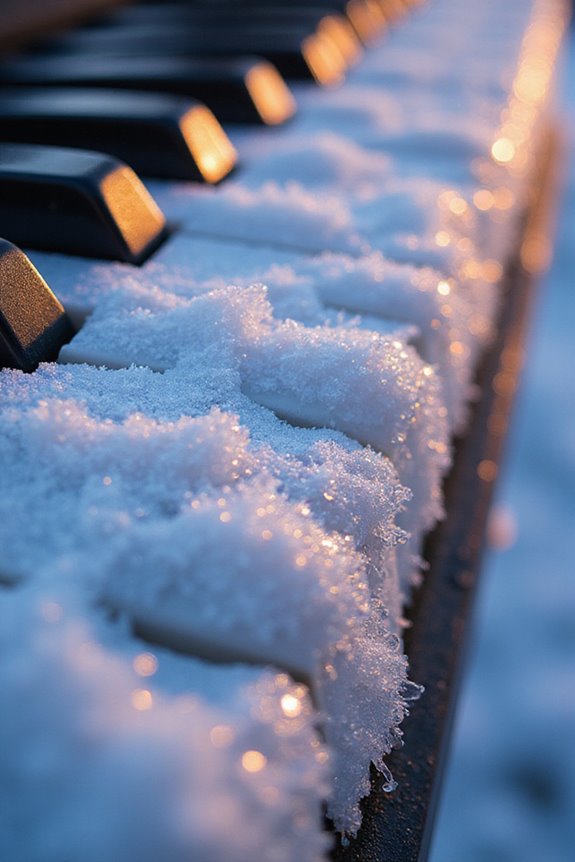
In winter landscapes, the interplay of light and shadow can greatly alter our compositions, inviting us to explore unique strategies for focus and arrangement. We can leverage foreground emphasis by positioning elements like wind-formed snow structures or frost formations prominently in our frame. Using wide-angle lenses helps to capture those details while creating a sense of depth.
To enhance color contrast, we should highlight the striking differences between dark trees and white snow, especially during sunrise or sunset when warm hues emerge. Incorporating layers—from foreground to background—adds depth and effectively guides the viewer’s eye. By experimenting with angling our cameras, we can reveal the intricate textures that define winter, enriching our overall composition beautifully.
Essential Gear and Equipment for Snow Photography
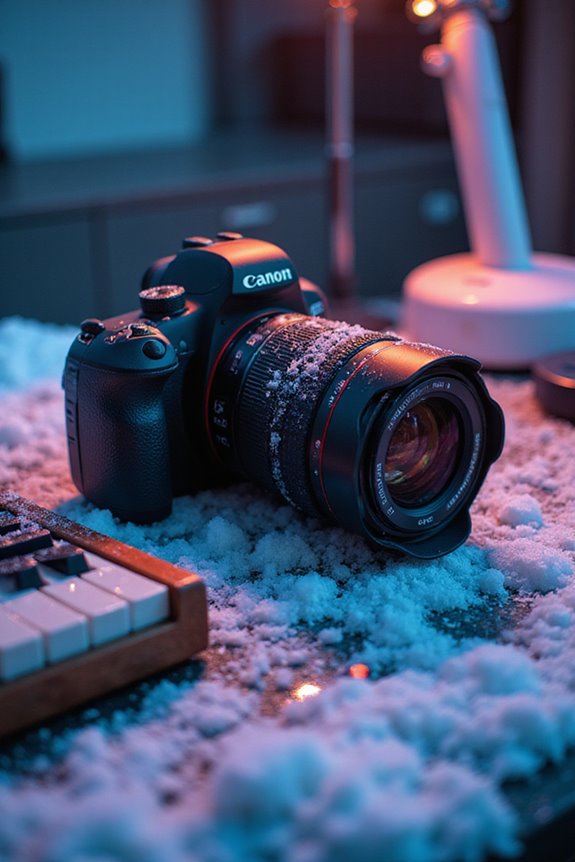
As we explore the breathtaking beauty of winter landscapes, it’s essential to have the right gear and equipment to elevate our snow photography. Dual camera bodies can be a game changer; one with a long lens for wildlife and the other with a wide lens for landscapes prevents time-consuming lens changes in the cold.
In terms of tripod types, carbon fiber tripods are ideal due to their lightweight and sturdy nature. They provide stability for long exposures, especially during snowstorms. When selecting lens choices, consider ease of use with gloves, aiming for weather-sealed options to keep moisture at bay. With the right gear, we’ll capture stunning winter moments without compromise. Additionally, investing in a high load capacity tripod can significantly enhance your shooting experience in challenging conditions.
Exposure and Metering Tips for Bright Environments
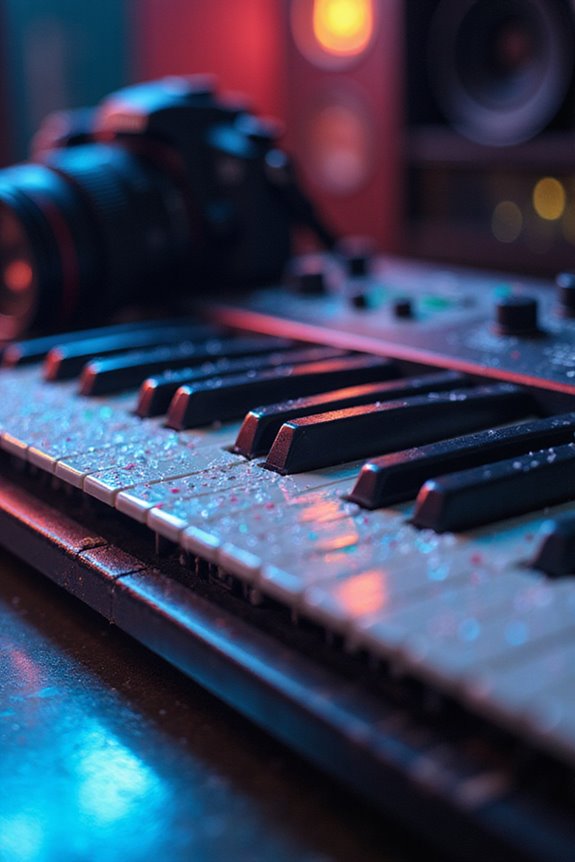
When photographing snowy landscapes, we often face the challenge of achieving accurate exposure, especially in bright environments where snow reflects an abundance of light. To tackle these exposure challenges, we recommend overexposing by +1 to +3 stops, depending on conditions. For sunny scenes, +2 to +3 EV is ideal; slightly overcast days may only need +1 to +2.
Utilizing effective metering techniques can help as well. Spot metering isolates specific areas, ensuring precise adjustments, while incident metering is invaluable for evaluating light falling on the subject—unaffected by snow’s reflection. When in doubt, bracket your exposures to capture multiple options, guaranteeing one of them hits the mark. By combining these strategies, our snowy shots can maintain that stunning brightness we seek.
Creative Techniques for Unique Snow and Ice Shots
Capturing the beauty of snow and ice extends beyond just getting the exposure right; it’s about releasing creativity in how we frame and compose our shots. We can simplify elements in our frames to highlight unique patterns, using leading lines from cracks or drift patterns to guide the viewer’s gaze. Shooting from creative angles, like low perspectives, magnifies textures and adds depth.
Let’s embrace playful experimentation with macro lenses to reveal intricate frost formations, or try drone photography for a fresh viewpoint. Wide-angle lenses allow us to create dramatic compositions, while contrasting bold colors against white snow elevates visual interest. Such techniques are essential for transforming ordinary landscapes into exceptional art pieces.
Frequently Asked Questions
How Do I Protect My Camera in Snowy Conditions?
To protect our cameras in snowy conditions, we’ll use weatherproof camera covers for moisture control. Keeping spare batteries warm and storing our gear properly will guarantee peak performance and safeguard against harsh elements.
What Clothing Should I Wear While Shooting in Cold Weather?
When shooting in cold weather, we should wear insulated layers for warmth and waterproof boots to keep our feet dry. These choices guarantee we stay comfortable and focused on capturing those perfect shots in chilly conditions.
How Can I Prevent Lens Fogging in Cold Environments?
To prevent lens fogging in cold environments, we should focus on proper lens care and fog prevention techniques. Let’s keep our gear acclimated, avoid sudden temperature shifts, and use hand warmers for effective moisture management.
What Types of Snow and Ice Photography Are Most Popular?
We’ve found that snow landscapes and striking ice formations captivate photographers and audiences alike. The dramatic beauty in these scenes invites us to explore textures, contrasts, and the unique allure of winter’s artistry.
Can I Use Smartphone Cameras Effectively for Snow Photography?
Yes, we can definitely use smartphone cameras effectively for snow photography! By adjusting smartphone settings and improving low light performance, we capture stunning images that truly reflect the beauty of snowy landscapes.


